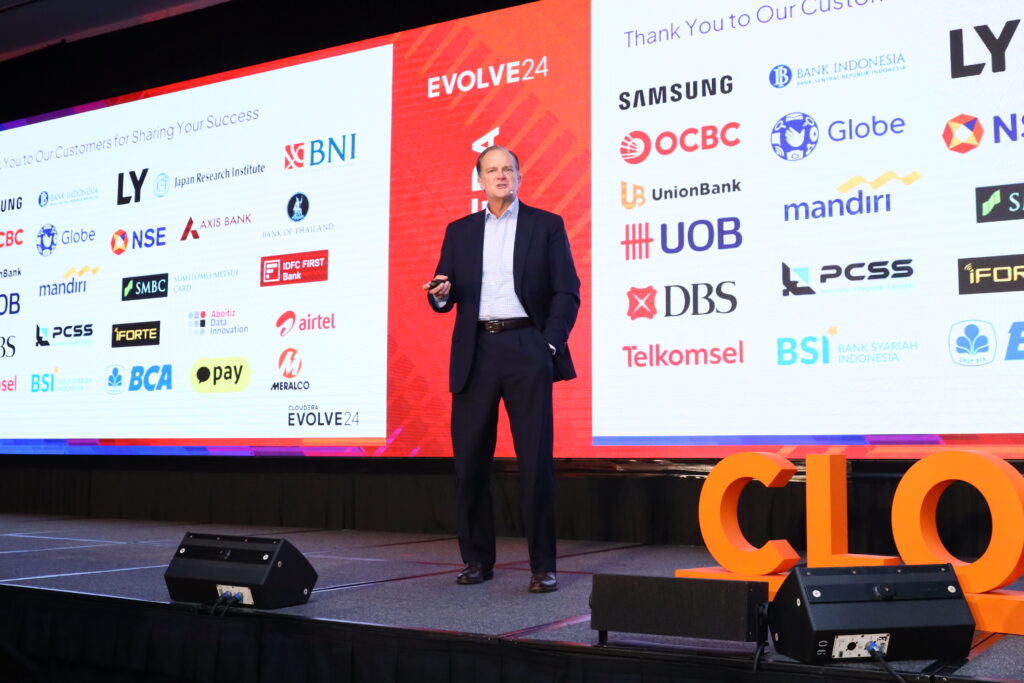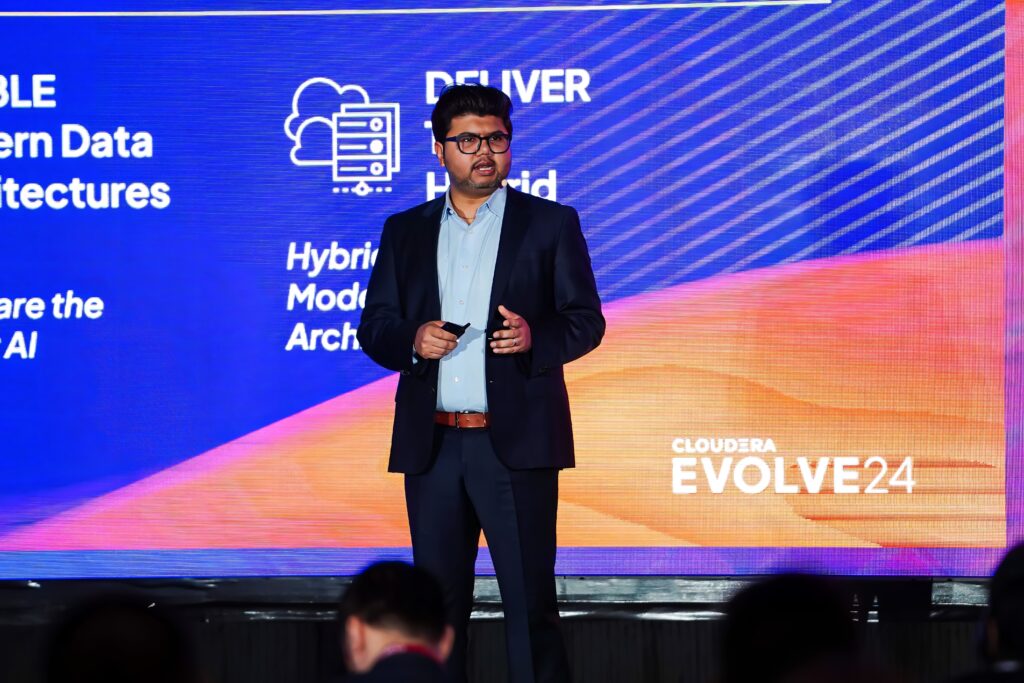
Cloudera was among the first few companies to commercialise Apache Hadoop, the open source framework that allows for the distributed processing of large data sets across clusters of computers.
Founded in 2008, it was very much known as a global leader in the big data and analytics space for about a decade up till its merger with Hortonworks to become an enterprise data cloud provider that supported both hybrid and multi-cloud deployments, leveraging Hortonworks’ technologies and knowhow to strengthen its position in the AL and ML space.
Fast forward to 2024 where Cloudera CEO Charles Sansbury and his executive leadership team were in Singapore in August to speak at the company’s EVOLVE24 event and reaffirm commitments to customers in the APAC region – Cloudera’s journey into AI has been a gradual process, and paved with an unrelentless focus on integrating AI and ML strategically into its core offerings to provide customers with the tools needed to unlock the full potential of their data.
Today, Cloudera wants to be known as an enterprise AI company.
It commissioned a global research to investigate the challenges and barriers that existed for enterprise AI adoption across enterprises, and the benefits of hybrid data management in relation to enterprise AI adoption.
The study indicated although a high majority of enterprises were adopting AI in some capacity (88 per cent), many were still lacking the necessary data infrastructure and employee skills to truly benefit from it.
To help address the infrastructural challenges faced by organisations in deploying AI, Cloudera has created a comprehensive ML platform called Cloudera Machine Learning (CML) to enable data scientists to build, deploy and manage ML at scale, through supporting the entire ML lifecycle from data preparation and model training to deployment and monitoring.
In addition, by integrating AI into its data analytics platform, Cloudera helps organisations derive insights from their data faster and more accurately. This includes predictive analytics, real-time data processing, and automated decision-making, which are crucial for industries like finance, healthcare, and manufacturing.
It focuses on operationalising AI by enabling enterprises to embed AI models into their business processes, which helps in automating tasks, improving efficiency, and making data-driven decisions in real-time.
Cloudera’s platform is also designed to support hybrid and multi-cloud environments, allowing enterprises to deploy AI models across different cloud providers while maintaining control and governance over their data, which is a primary concern for most organisations.
Describing his leadership style as authoritative (not to be confused with authoritarian leadership) which involves motivating team members and connecting them and their work to a greater purpose and a common goal without micromanaging, Sansbury believes in alignment, prioritisation, and pursuing goals with a sense of urgency, when asked about bringing Cloudera to the next chapter.
“What we are trying to do now is to be more efficient in maintaining our business in order to increase the slice of the pie that we can drive towards innovation. We are investing in innovation around our hybrid management capabilities, foundational cloud products, and the manageability and usability for those products. We’re investing a lot in our tooling to enable customers to pursue AI.”
“There was a chart in my presentation that talked about true hybrid, modern data architecture, and enterprise AI, and those were the prioritisations articulated to the company. We’re using those priorities both from a go-to-market perspective and for investment across the products.”
“And so I think the goal as a big business with a lot of history, not every dollar we spend is on innovation, so having that prioritisation and then trying to make that slice of the pie that is innovation related as big as possible means doing the other stuff more efficiently,” said Sansbury.
When asked about whether Cloudera had a Web3 strategy in place, he said there might be more nodes in the system for producing and collecting data, but data analytics would still be centralised.
“I think the trend you mentioned is going to happen, but I don’t think it changes how companies think about creating central repositories where they bring together data and then using that for some types of detailed analysis to try to uncover business insights and drive information,” he said.
His view was echoed by Abhas Ricky, chief strategy officer at Cloudera.
“I think for most people that went into Web3, they have connotations of it around blockchain and the metaverse, and that directly or indirectly impact our customers. DeFi is an actual trend that is coming through and some of our customers are looking to us to have a lakehouse or a governance mechanism that supports that architecture.”
“I don’t think Web3 and AI necessarily have a unified definition. But obviously, as enterprise AI goes mainstream, we will continue to develop capabilities that help build AI applications faster. One of the core things that AI has done is creating sensitivity around data privacy and authorisation. Authorisation is a key element that people are trying to get to whether you are a bank, telco or retailer, and that is something we have provided as well.”
















